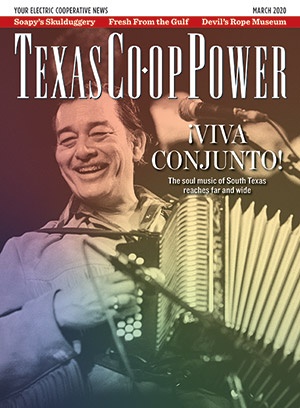Texas is known for wide-open spaces. On the 19th-century range, cowboys could ride from dawn to dusk without seeing a sign of civilization. Then came the invention of barbed wire, creating fences that made it near impossible to drive cattle. On a recent trip to the Panhandle, I found myself entangled in the history of the so-called devil’s rope.
On Route 66, about 75 miles east of Amarillo, I discovered the perfect place to stop and stretch my legs while simultaneously pondering the weird and wonderful: the Devil’s Rope Museum in McLean.
While cruising McLean’s red brick streets and beyond, I noticed a beige building with two large orbs adorning its entrance. As I got closer, I realized these were actually rusted bundles of barbed wire, rolled up like yarn.
“How could any museum covering something as strange and specific as barbed wire be interesting?” I thought. I quickly realized how wrong I was. The museum was cavernous, with every inch of wall and countless educational panels filled with information, artifacts and stories. I decided to poke around and begin my education.
Barbed wire was invented after the Civil War, and hundreds of types received patents as inventors looked to outdo one another and create the next best thing. There’s single twist, double twist, ribbon wire, diamond wire, sawtooth wire and one called the Dodge Star that can fetch upward of $500 a foot from the right collector. Joseph Glidden of DeKalb, Illinois, came up with the design, which used two strands of wire twisted together to hold the barb spurs in place, that became the most popular in the country.
The museum in McLean displays 2,000 types of wire. The number blew my mind because, in truth, I had never paid any attention to the sort of metal cockleburs that ripped through so many pairs of my childhood jeans.
In addition to barbed wire, the museum boasts other really cool exhibits. There’s a full-size cowboy wagon set against a painted diorama of the Texas sky. There are countless tools used for tasks from digging fence posts to mending busted barbs. There’s even a number of barbed wire sculptures that include a scorpion, armadillo and cowboy hat. I can only imagine how many pairs of gloves the artists must have gone through. Also set in a corner is a sobering exhibit about how humans have used barbed wire against one another in times of war.
When it was first introduced, almost everyone in Texas hated barbed wire. It sectioned off the prairie, cutting cowboys off from grazing and watering their cattle wherever they pleased. At night, renegade groups would go on fence-cutting sprees that resulted in bloodshed, and not just from pricking their fingers. It got so serious in the 1880s that Gov. John Ireland and the Texas Rangers had to step in and quash the violence.
Soon, Texans began to accept fencing as a way of life. Barbed wire was cheaper than wooden fencing. It helped ranchers control the breeding of their cattle, and it helped farmers grow crops without the threat of wandering herds mowing everything down.
As I learned, barbed wire truly changed the Texas frontier, and very few Texans understand its impact—something this small museum hopes to change, one visitor at a time. I also learned that sometimes the strangest roadside stops lead to the best road trip education.


